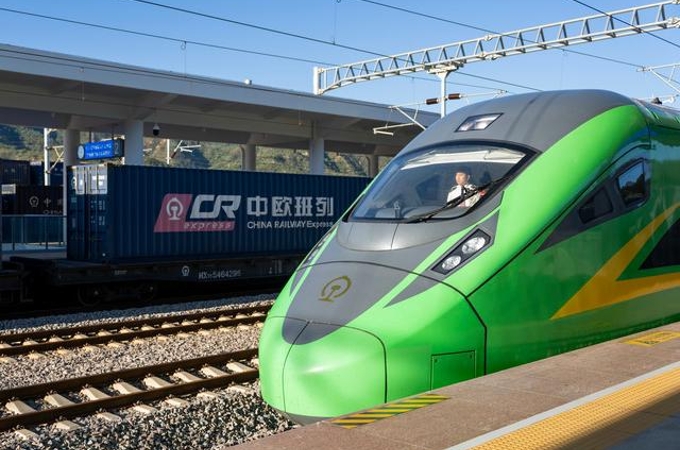Feature: Spiraling inflation forces Lao people to cut expenses
Source: Xinhua | 2022-10-21 | Editor:Lexi
Spiraling inflation in Laos is having a dramatic effect on people's lives, even though the government has promised to garner more revenues to swell its coffers while reining in spending and stabilizing currency exchange rates.
Inflation in Laos hit a 22-year high at 34 percent in September 2022, according to an updated report from the Lao Statistics Bureau website.
The year-on-year inflation rate in Laos increased from 30.01 percent in August to 34 percent in September.
The 22-year-high price rise was driven by the surge in the price of food, medicines, fuel and other consumer goods.
With the cost of living continuing to rise, people from all walks of life in Laos are expressing their opinions on the economic crisis via interviews and also on social media platforms.
"It's not easy to adapt to the spiraling cost of living. First of all, I think we should give up any unnecessary spending habits and not buy trendy things like expensive mobile phones or clothes. We have to be careful with our money and spend wisely," Lattana Phonemany, a resident in the Lao capital Vientiane told Xinhua.
"I am also growing vegetables at my house. Reducing unnecessary expenses and trying to earn more money is the best way to deal with the situation."
Savan Sommany, a part-time employee in Savannakhet, said "Now we have to try to save everything we earn."
"As we all know, almost everything we use is imported and prices are greatly influenced by exchange rates. I think it's important to drive up the value of the kip and put more locally-made goods on shop shelves."
He added that the continuing depreciation of the kip is driving inflation and it costs businesses more and more to buy the foreign currencies they need to import goods.
"I hope that the government will be able to put things right very soon."
Inflation in Laos has surged significantly since 2021, and the country now has one of the highest inflation rates in Southeast Asia.
The weak kip, the Lao currency, and growing demand for foreign currencies needed to import goods and repay debts are also the drivers of inflation.
The kip continues to depreciate despite the government's efforts to regulate currency exchange rates.
Phonepaserd thonglit, a resident of Vientiane province, said that the cost of living is rising much faster than incomes.
"Almost everything we use is imported and prices are greatly influenced by exchange rates. I think we have to tighten our belts and try to be self-sufficient."
"Most importantly, we should try to use products that are made in Laos and avoid anything that involves unnecessary expense."
"It's not only Laos that has a cost-of-living crisis. It's commonplace in other countries as well. But Laos is particularly affected because we have to pay for goods with more foreign currency than we actually have," she added.
The 22-year high of inflation rate has made the headlines on social media in Laos, with the public showing their opinions on the economic woes.
"With this situation, we should not be extravagant, spend within our means, and make sensible decisions when it comes to spending."
"I hope the authorities can do something soon because most people's incomes are not keeping pace with the rising cost of living."
"Some vendors use fluctuating exchange rates to their advantage, which is unfair, and I would like to call on them to stick to the rules."
"We should do everything possible to save money and buy more Lao-made products than imported goods."
In response to the economic woes, the Lao government has reiterated its pledge to avoid default with more proactive measures adopted to address the country's economic problems.
The Lao government has instructed relevant agencies to take stronger actions to address issues ranging from macro-economic vulnerability, improvement of the investment climate and repayment of debts, to fight against natural disasters.
The instruction was issued during the government's cabinet monthly meeting in August.
You May Like
-
China's Yunnan facilitates flower exports to Thailand
Southwest China's Yunnan Province, a main supplier of flowers, has launched a slew of favorable policies to facilitate flower exports to Thailand.
InKunming 2022-08-24 -
China, Thailand kick off joint air force training exercise
A joint training exercise between the Chinese and Thai air forces kicked off on Sunday at Udorn Royal Thai Air Force Base in Thailand.
InKunming 2022-08-15 -
Indebted developing countries feeling the heat
As Sri Lanka has defaulted on its debt, a supposed Chinese "debt trap" is to be blamed. In reality, the vast majority of the its foreign debt is owed to the Wes...
InKunming 2022-08-12 -
Laos meets target of vaccinating 80 pct of population agains...
A total of 5,885,061 Lao people have had one dose of a COVID-19 vaccine, equaling 80.2 percent of the population, according to Laos' Ministry of Health.
InKunming 2022-08-12 -
Fiscal stimulus, high vaccination rates fuel Cambodia's econ...
Strong fiscal stimulus and high vaccination rates have helped quickened Cambodia's economic recovery in the post-COVID-19 pandemic era, an ASEAN+3 Macroeconomic...
InKunming 2022-08-12 -
Thailand announces 1st policy rate hike in over 3 years to c...
Thailand's central bank announced on Wednesday to raise the key policy rate by 0.25 percentage point, its first rate hike since late 2018, to contain the rising...
InKunming 2022-08-11 -
Cambodia-China trade up 15.6 pct in first 7 months
Trade volume between Cambodia and China was valued at 6.97 billion U.S. dollars in the first seven months of 2022, up 15.6 percent year-on-year, according to th...
InKunming 2022-08-11 -
Malaysia's unemployment rate falls to 3.8 pct, lowest since ...
Malaysia's unemployment rate fell to 3.8 percent in June, the lowest since the pandemic hit the country, official data showed Tuesday.
InKunming 2022-08-10 -
Laos sees visitors increase in first half of 2022
Laos has seen a surge in the number of visitors in the first six month of 2022, following the lifting of travel restrictions as the COVID-19 pandemic subsided.
InKunming 2022-08-10 -
RCEP to stimulate economic recovery in post-pandemic era: Ca...
Cambodian Prime Minister Samdech Techo Hun Sen said on Monday that the Regional Comprehensive Economic Partnership (RCEP) free trade agreement, which entered in...
InKunming 2022-08-09







